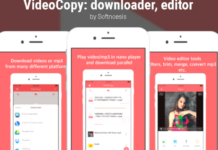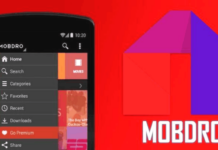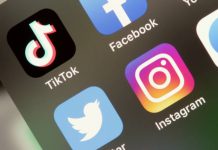If you're wondering how to lock apps on your iPhone, there are a few different options that you can use. Among these options are Guided Access, Restrictions, Screen Time, and Passcode. Choosing the appropriate setting will help you to protect your data and prevent access to inappropriate content on your device.
Guided Access
To set up Guided Access on your iPhone, launch the app by triple-clicking the side/home button or by pressing the Face ID button. This will open a configuration panel where you can customize the settings for Guided Access. Here you can disable the top and volume buttons, keyboards, dictionary lookup, motion, and other features.
Once you've set a Guided Access passcode, you can enable or disable it. You can choose a time limit for each session, and set the time to expire when you're finished. If you forget your passcode, you can disable the Guided Access feature by typing in a different one. You can also disable this feature by pressing the Toggle option in the Settings app.
Guided Access lets you define the area of your iPhone that you want to protect by preventing touch inputs. You can also select which part of the screen should be locked and which parts should be accessible. Then you can select whether to disable touch controls or set a time limit. You can also set a passcode to protect your device in case you have to unlock it accidentally.
Guided Access is a feature in iOS that allows you to lock apps on your iPhone. It will not prevent you from exiting an app, but it will prevent unauthorized users from using the device. Guided Access can be very helpful when you need to give another person your phone, or if you simply want to prevent someone from using your phone without your consent.
Guided Access is a great feature in iOS. It will keep you and your children safe and protected at all times. Enabling Guided Access is easy to do. Just follow the steps outlined above to protect your iPhone. When you're finished, the App Lock screen will be unlocked and you can use all the apps as usual.
Guided Access will prevent accidental changes and ensure that your personal data remains private. It will also keep you focused and safe. It also has a timer feature that limits usage of apps to specific tasks. This feature is ideal for schools, business settings, museums, and other places where privacy is important.
Restrictions
You can use iOS's Restrictions feature to restrict access to certain apps. To use this feature, you should first make sure that you have a passcode. In iOS 12, this feature was introduced. It locks the screen and prevents users from accessing certain apps, but this option is only available for first-party Apple apps.
You can also use Restrictions to block certain apps, like Safari. This feature requires a passcode that cannot be altered by another person. It's especially useful if you're handing an iPhone to a child. This feature can prevent your child from visiting websites that are inappropriate for them.
With Restrictions, you can prevent other people from installing applications and making in-app purchases. You can also prevent other users from making changes to your privacy and location settings. You can also restrict access to features, like the microphone and Bluetooth. Restrictions are also available for Apple TV.
Restrictions allow you to choose which apps are restricted, and for how long. You can also disable these restrictions if you don't want to limit the time spent using apps. The process is simple and only takes a minute. You can then unlock your phone and enjoy your favorite apps again.
To enable the Restrictions feature, you must first unlock your iPhone with your passcode. This password is shared across all iCloud devices, so you can use it to restrict app usage on other iPhones. It's a great option if you want to keep your child safe and content-free. It's important to note that the passcode you choose for this feature should not be the same as the one you use for unlocking the device.
Another option to restrict access to certain apps is to set screen time limits. Screen time limits can be set in Settings > Screen Time. You can then specify a time limit for each app and customize the days for which that restriction applies. You can also set a passcode to share restrictions with another user.
The restrictions function on the iPhone is a great way to control your child's usage. This feature restricts access to certain apps and prevents third-party applications. You can also set restrictions on in-app purchases and content types. This way, you can limit access to specific apps and prevent others from altering the settings on your device.
Screen Time
Screen Time is a feature that allows you to set a time limit on your iPhone. You can add or change a time limit, as well as customize which days you want the screen to be locked. Once the time period has expired, the phone will ask for a passcode to unlock the app. You can delete this feature anytime.
You can also add time limits for specific apps. To do this, go to Settings > Screen Time > App Limits. You can then select a category for the apps you want to restrict. For example, you can restrict apps within the Social Networking category, and then choose how long each app is restricted.
Restrictions are another feature for iPhone users. Restrictions can help you to control how much time your children spend on their devices. With this feature, you can restrict which apps they can access and what types of content they can access. This feature can also help you to control who can change the settings of your device. However, this feature only works with built-in apps; third-party apps are not protected.
You can set Screen Time to lock apps on your iPhone, iPad, or iPod touch. This is a great way to keep your kids safe and prevent them from using your personal information while you're away. Screen Time supports setting age ratings, so you can restrict certain apps to certain age levels. You can also set restrictions for apps in the "Allowed Apps" category.
Once you've set a time limit, you'll need to enter a password to unlock the app. If you've already set a password, you can skip these steps. Otherwise, you can tap "Add Limit" to set a new limit for that app. You can also use the circle beside the category to set a time limit for one specific app.
You can also use a passcode to lock an app. Make sure that the passcode is different from the screen lock. This will help you stay focused and avoid accidentally exiting an app.
Passcode
One of the ways to protect your iPhone from theft is to use a passcode to lock apps. This feature works in the same way as a passcode on a computer. You can enter the passcode to unlock your device, but you'll have to be aware that there are some limitations. First of all, you can only lock a single app at a time. Second, if you want to lock multiple apps, you need to enter the passcode twice.
If you're worried about your child using your iPhone without your permission, you can set a time limit for each app. You can choose whether the time limit is minutes, hours, or days. This feature is only available on iOS 12 or higher. You can also set a limit for individual apps and websites. By following these steps, you can protect your children from inappropriate content and keep them safe from distractions.
Another way to protect your iPhone from theft is to enable Guided Access. This feature locks your phone to one app and prevents it from being accidentally exited. This is helpful if you need to hand your iPhone to another person. Just make sure that you don't give them the passcode because otherwise they may be able to open other apps while using your iPhone.
To lock apps on iPhone, go to the Settings app and tap on Screen Time. You can also use a passcode to lock the screen time feature. You can use your iPhone's passcode to lock apps if you'd like to restrict how much time your children can spend on the screen.
While the passcode to lock apps on iPhone doesn't have official support, there are many other third-party apps that can help you secure your phone and protect your data. You can also use the Screen time feature to lock individual apps for a certain amount of time. This feature was introduced in iOS 12 and allows you to lock apps in 15-minute increments, one-hour increments, or the entire day.
Using a fingerprint is another way to secure your iPhone from theft. You can apply fingerprint lock to apps using the Touch ID feature, but some services (such as Facebook) don't support it yet. For these apps, you may need to enter a passcode, which is not easy to do with a fingerprint.





